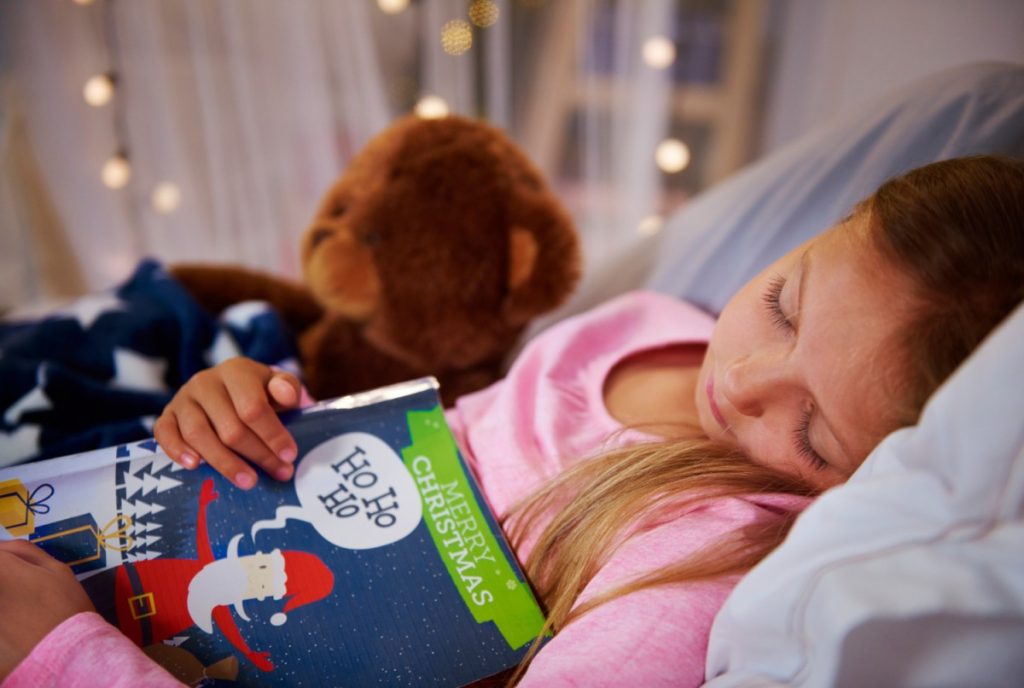Imagine your little one bouncing into the day, eyes sparkling with energy and curiosity. Now imagine that replaced with grogginess, meltdowns, and struggles to concentrate. This stark contrast highlights the critical role of sleep in a child’s development, especially during the crucial pre-school years. Sleep fuels their growing bodies and minds, impacting everything from learning and memory to mood regulation and emotional well-being. Unfortunately, many pre-schoolers don’t get the sleep they need, leading to potential consequences for their overall health and happiness.
But fear not! By establishing a calming bedtime routine, you can help your child drift off to dreamland peacefully and wake up feeling refreshed and ready to conquer the day.
How Much Sleep Does My Pre-School Child Need?
Science tells us that 3-5 year olds need 10-13 hours of sleep (including naps) for optimal functioning, according to this review in BMC Public Health. This might seem like a lot, but research by the National Sleep Foundation highlights the detrimental effects of insufficient sleep on attention, memory, and emotional regulation in children. Think about it: how well can you learn or manage your emotions when you’re running on fumes? The same applies to your little one. Ensuring they get enough sleep sets them up for success in all areas of their development.
Crafting Your Calming Bedtime Routine:
Consistency is key! Establish a specific bedtime and wake-up time, even on weekends, to help your child’s body regulate its natural sleep-wake cycle. Then, carve out 30-60 minutes for a calming pre-bedtime routine filled with activities that signal it’s time to wind down:
- Warm bath or shower: The gentle warmth can promote relaxation and prepare their body for sleep.
- Gentle massage or lotion application: Physical touch is soothing and can foster a sense of security.
- Quiet playtime with calming toys or books: Avoid anything too stimulating, like screens or action-packed stories.
- Dimming the lights and reducing screen time: Bright lights suppress melatonin, the sleep hormone. Turn off electronics at least an hour before bed.
- Singing lullabies or reading soothing stories: Create a cozy atmosphere with calming melodies or gentle narratives.
- Cuddling and talking about the day: This provides bonding time and allows you to address any anxieties they might have.
Remember, their bedroom should be a sleep haven. Opt for comfortable bedding, an appropriate room temperature, and minimal noise.
For more ideas on creating a sleep routine check out this article from the National Sleep Foundation.
Managing Bedtime Resistance:
Even the best routines can encounter bumps. If your child resists bedtime, validate their feelings (e.g., “I know you don’t want to go to sleep, but…”), remain firm on the boundaries, and offer comfort and reassurance (e.g., “I’m here, and I’ll see you in the morning”). Avoid giving in to demands for attention or playtime, as this reinforces resistance.
Tailoring the Routine to Your Child:
Every child is unique, so personalize the routine to their preferences. Maybe they love bath time stories or prefer listening to instrumental music instead of lullabies. Experiment and find what works best for them.
Remember: Building a consistent and calming bedtime routine takes time and patience. Don’t get discouraged if things don’t click immediately. Be patient, consistent, and offer support, and you’ll witness the magic of a well-rested child ready to embrace each day with open arms.
By following these tips and creating a personalized bedtime routine, you can ensure your pre-schooler gets the sweet dreams they deserve, paving the way for a brighter and more fulfilling tomorrow.

